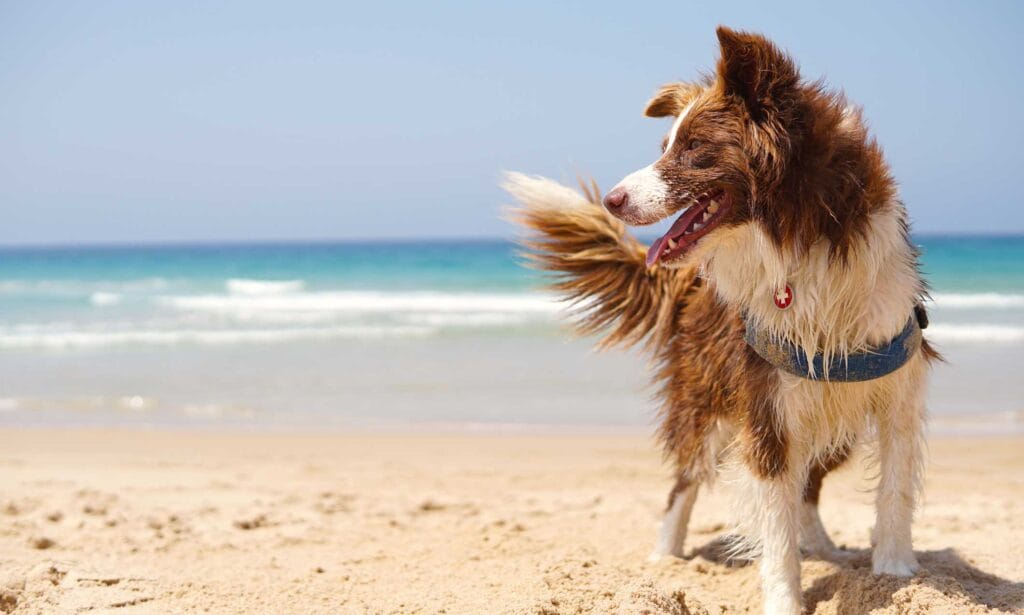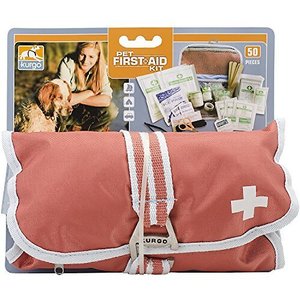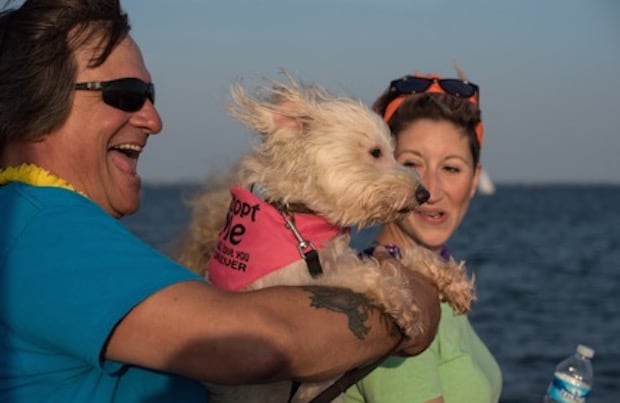The sun! The sand! The surf! Beach days are even more fun when your furry friend is along for the ride.
Taking some time to prepare for your beach trip and knowing what to expect once you get there makes for a safe and happy excursion. Here are tips for taking your dog to dog-friendly beaches.
Pack Proper Gear
Arriving at the beach without preparing for your dog’s basic needs can put a damper on your day. That’s why it’s recommended to bring the following gear to the beach:
Sunscreen for dogs
Yep, dogs can get sunburn. Lather your pup up with sunscreen specifically formulated for dogs at least 30 minutes before heading out—paying special attention to their ears, nose and areas where they have less fur, like their belly, which can get burned by reflected light if provided sun protection.
Fresh water and a water bowl
Bring multiple gallon-sized jugs of fresh water and a bowl. Keeping your dog hydrated helps keep them cool and protects them from overheating and heatstroke. Signs of overheating include rapid panting or excessive drooling, problems with coordination, diarrhea or vomiting, collapse and losing consciousness.
You don’t want your dog drinking ocean water. Drinking this salt water can cause your dog to vomit and also act as a laxative, so make sure you’re providing ample fresh water for your pooch.
Use whatever water is left over to rinse off the irritating salt water when you’re done for the day.
If you have a brachycephalic breed, an out of shape pooch or a senior, be aware that the heat and stress of prolonged beach running might overwhelm your dog. Make sure to take frequent hydration breaks underneath the shade of your umbrella.
A long leash
Your dog absolutely must come to you when you call for them (called the “recall cue”) every single time without fail. If they have not mastered this command, keep them on a long leash—about 20 to 30 feet—while enjoying the sand and surf. They’ll still have enough room to frolic and run, but you’ll be able to reel them in if necessary.
A well-trained dog is a pleasure on outings and minimizes worry that they’ll run off or get into something harmful.
Plenty of dog treats
Bring tasty dog treats with you to get in some really great practice of the recall command on-leash with the distractions of nature and people.
Lay the praise on thick with each instance of success and give them a treat every time they obey. Soon, you’ll both be going out for your beach day without the need to leash.
Dog first aid kit
Bring (or put together) a dog first aid kit of bandages, cotton balls, ammonia and hydrogen peroxide in case of jellyfish stings or cut paws.
Dog life jacket
Blanket, towel and umbrella
Bring a thick blanket for your pup to lie on, both on the hot sand and in your car on the way home.
Also bring some towels to dry off. A large beach umbrella will provide your dog with shade from the hot sun.
Paw protectant
The sand can get hot. Protect your dog’s paws with dog booties or dog shoes.
For dogs who give booties a hard pass, another option is to shield your pup’s paw pads with a protective wax, like Musher’s Secret paw protection. Paw waxes serve as a physical barrier that can protect your dog’s pads from hot surfaces.
Prepare for Surprising Behavior
Your dog may be ecstatic—bordering on delirious—as they romp on the beach and dog park and bark at the surf.
Because you probably haven’t had a chance to work with your dog amid the novel distractions at the beach, be aware that they might not be as responsive to you as they are in your yard.
Don’t let your dog off leash until you’re confident they’ll respond to your training cues, like “come” and “stay,” and will refrain from raiding other people’s food and supplies.
Another factor is the crash of the waves and shouts of giddy kids and other beachgoers, which may drown out your own voice and make your cues inaudible. If danger is lurking in the surf, you may have trouble alerting them to it so they can remain safe.
Always Keep a Close Eye on Your Dog
When you get to the beach, keep your pup on a dog leash as you scope out the situation and assess the circumstances. Ask yourself important questions:
-
Is the area overly crowded with small children who could get knocked over by an exuberant pup?
-
How many other dogs are on the beach, are they playing appropriately together and what’s the size difference between the dogs?
-
Is the beach littered with trash they can eat or broken glass and beer caps that can cut their paws?
If it seems like the environment might be challenging for your dog, keep them on leash until the situation calms down, or move to a less populated part of the beach.
Remember that your first priority is your dog’s wellbeing, so don’t get so caught up in your own good time that you forget about your furry best friend. Always keep an eye on your dog and make sure that he’s happy and safe.
Pay attention to warning flags
Also, make sure to pay attention to warning flags that may be flying at lifeguard stands or along the boardwalk.
-
Purple flags indicate marine pests such as jellyfish, stingrays or even sharks.
-
Red flags inform the public of rough conditions such as riptides, strong surf or bad currents.
Other Rules to Follow at the Beach
Many beaches have individual laws that can leave pet parents with a fine or citation if not obeyed. Below are a few more rules to look for before hitting the sand and surf:
-
Puppies under four months not allowed: Young dogs are especially vulnerable to overheating and could face lifelong behavioral challenges if they have a negative experience with another dog. It’s best to leave your little friend at home.
-
Vaccinations must be up-to-date: Contact your vet to make sure your dog is current on all his licenses and vaccinations to keep him—and the other pooches he interacts with—safe.
-
ID tags on a collar: Microchipping is a good idea, but the quickest and easiest way to identify your dog to others is your pooch’s name and your phone number on his ID tags, worn on a waterproof collar.
-
Obey leash laws: Many beaches allow off-leash fun, but not all. Check the posted rules for specifics about what time of day dogs are allowed on the beach, and if they need to remain on leash.
-
Bring dog poop bags: Keep an eye on your pooch to clean up after his potty breaks.
-
Keep off the dunes: Most dunes and the sea oats that grow on them are protected. Keep your dog off the dunes to avoid any trouble.
More ways to keep your dog safe this summer:
Share:






















